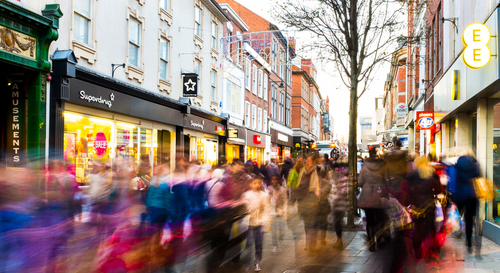News of Amazon’s first pop-up shop opening in New York in time for Christmas has certainly put the ‘clicks-and-mortar’ trend back into focus. This term which initially emerged to describe high-street retailers going online during the early dotcom years now is used to describe online companies opening up shops or temporary physical retail spaces. A move that seems to highlight that far from being over the high street is still a necessary part of the kind of customer service that consumers want and expect. But while physical stores can extend the reach of an e-commerce’s brand to new customers, it does require different skills and can bring with it additional risks, so if you’re thinking of moving from clicks to bricks in 2015, here are some issues to consider.
Offline stores could provide interesting data for online sales and provide valuable insight into how buyers select products. For us the introduction of pop-up stores would serve to give us an insight into how buyers select products. Customers like to take a look first at the different colour or design options available before buying online. I am sure Amazon will use this as an opportunity find out more about its customers than it can do online.
Then again, not everything needs a tactile touch. Merchandising on t-shirts, hoodies and phone cases sells very well online because they are not high risk tactile purchases. The desire to purchase is primarily driven by the design and message they carry. There will always be some higher cost and more tactile products that consumers will want to touch but there are many e-commerce retailers that manage high return rates that are eliminating even this as a concern.
Don’t forget to focus on the customer. What matters now more than ever is ‘the experience’ either offline or online. With so many local and international online competitors able to steal your customer, a bad experience loses you customers. It is critical for high-street retailers to provide a good online experience too. An eager shopper that has to wait to check out may decide to order online instead of standing in line at a till —especially with a rapid shipping option.
Customers want good service and value so if you provide this your brand will grow by retention and recommendation faster online than any offline retailer can manage. Amazon’s introduction of same day delivery service and more convenient locations to collect their goods from highlights that the customer is always top of mind.
A retail space can reach more easily an audience already in shopping mode. Shops can also sometimes give consumers a far stronger introduction to your brand. And in-store visits can become opportunities to drive re-purchase or incremental sales online.
Having a retail space also allows your brand to benefit from another retail trend, the rise of mobile-commerce. Tablets and smartphones are changing the way we shop. The experience of being able to curate and compare real products and complete the transaction later at your convenience is becoming increasingly important – having a physical store is a key element in this process.
The biggest challenge for online retailers considering a clicks-and-mortar move however, is one of logistics and focus. At Spreadshirt, we have over 500 employees around the world all specialists in online marketing, e-commerce experience, mass customization and rapid direct-to-consumer fulfilment to 190 countries. Not one of them specialises in running a scaled offline retail business. There are thousands of differences between both channels from the thought process to supply chain, to how you manage staff to customer experience in the offline environment. Plus, there are issues to consider such as shoplifting, stock damage and cash transactions. Deciding to move offline without taking into account all these considerations would not be a good idea. E-commerce retailers looking to make that move should really look to find an experienced retail partner before doing so.
As the CEO of a merchandising e-commerce platform, I have often considered the possibility of opening an offline store but to be honest, it has been a low priority compared to growing the several tens of thousands online shops on our platform and 19 markets we currently operate in. That said given the sales potential having several routes-to-market offers both us and our sellers, a multi-channel approach is likely to be an important part in our company’s long-term strategy.
E-commerce is experiencing high growth and the path to purchase is becoming increasingly complex, it is therefore important that online retailers understand their customers in order to drive sales. This might mean opening an offline shop. Ultimately though, what matters is creating an integrated omni-channel approach that creates connections across multiple channels and drives value to consumers, as this is what will lead to business success.
Featured image source: Jason Batterham / Shutterstock.com






